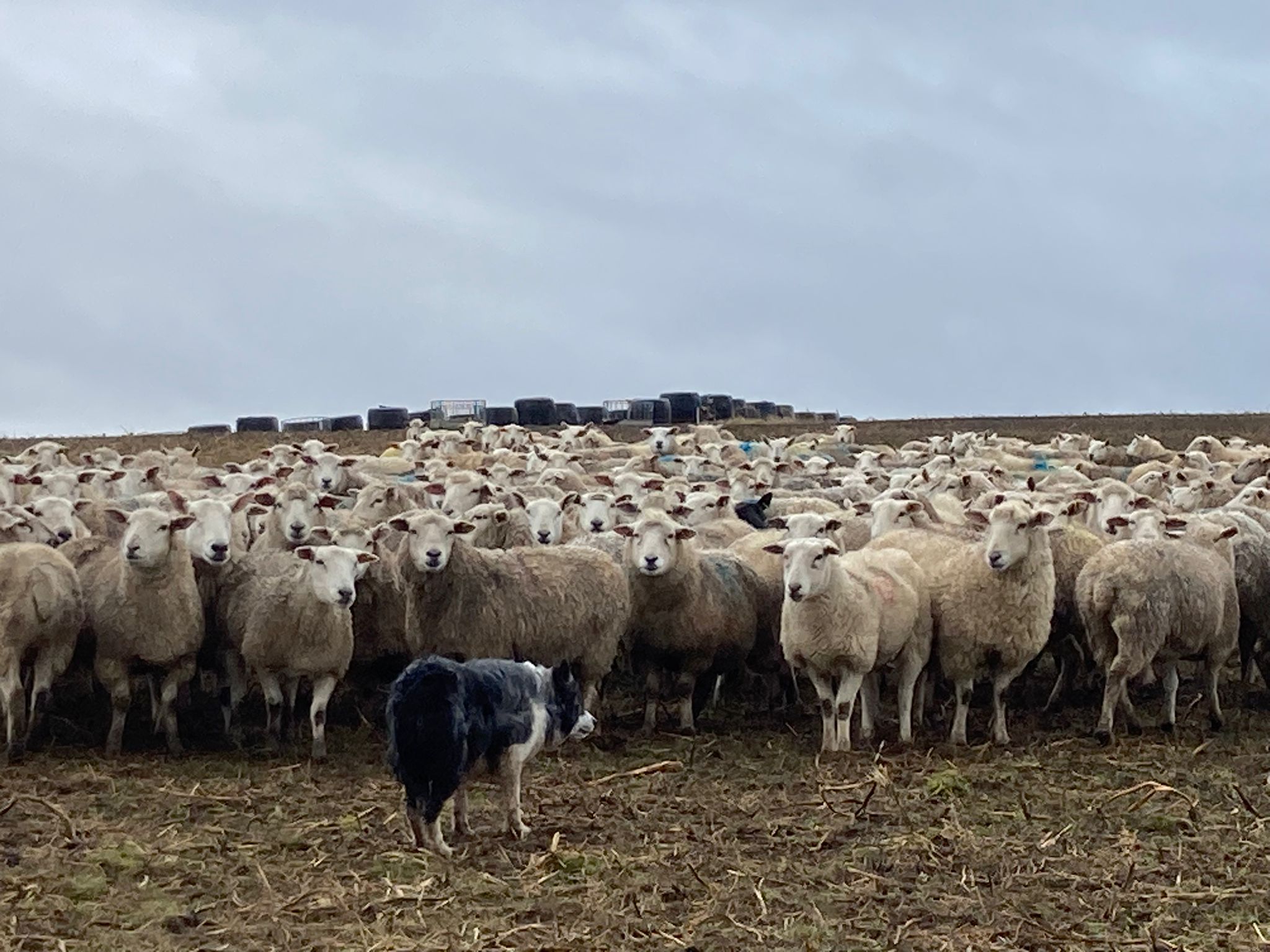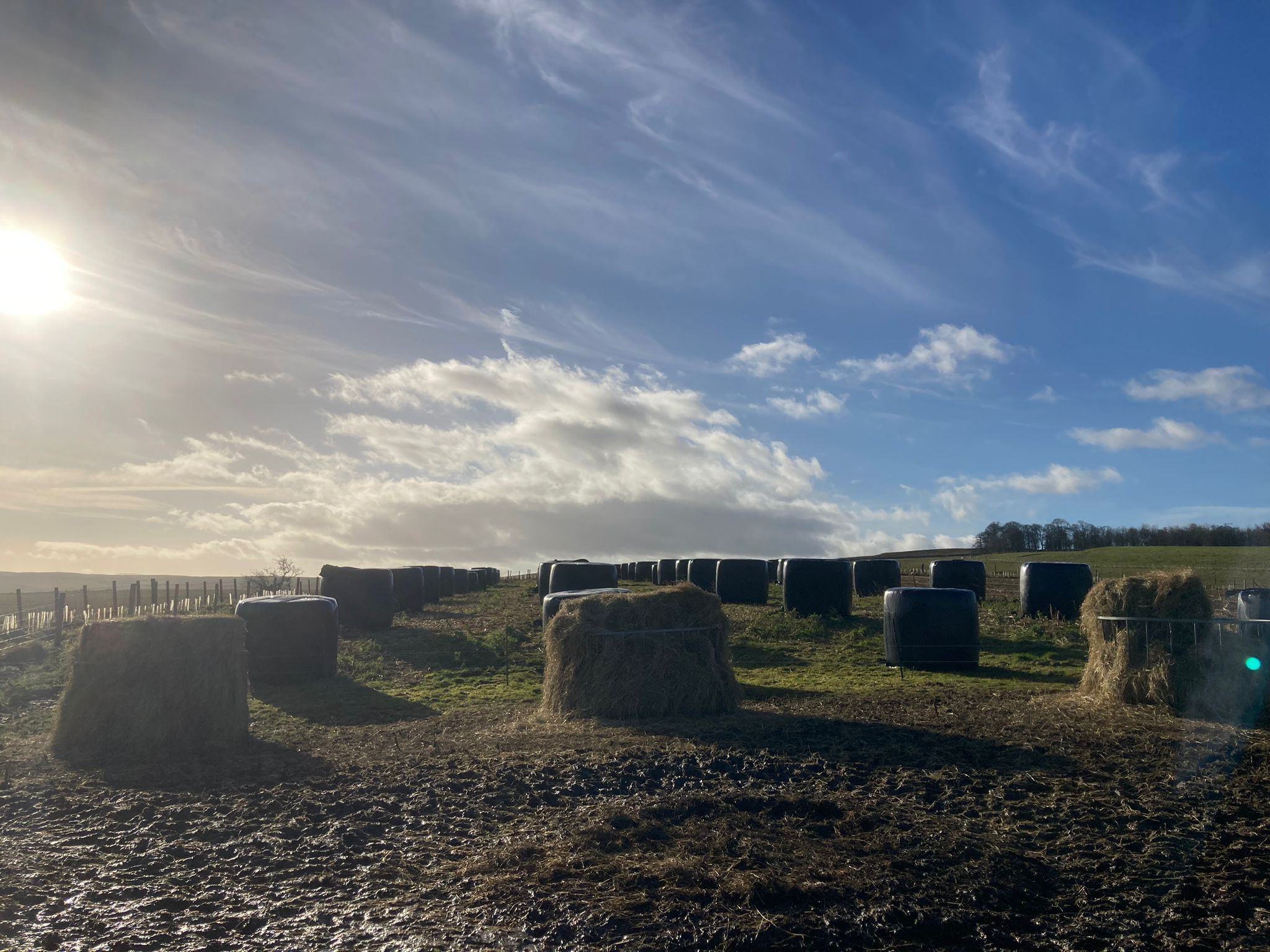These ewes are on a bale grazing system plus a cover crop. At the top of the hill are bales set out in rows of four, plus ring feeders that go round them. The bales have an electric fence around them which is moved up each time the current four bales have been eaten, allowing the ewes access to the next four.
The reason behind this is to minimise damage to the soil caused by trampling around feeders or using a tractor to take feed to them.
The field is planted with a cover crop. The cover crop, which is also grazed in strips by moving an electric fence, helps prevent soil erosion, provides feed for the sheep, draws up nutrients from deeper in the soil, sequesters carbon, and the clover content fixes atmospheric nitrogen into the soil.
Bale grazing is becoming more popular, with significant cost savings compared to housing cattle, better soil carbon management and improvements in animal health.
The system helps bridge the late winter feed gap, allowing other grass fields time to recover and providing an opportunity to seed into the bale-grazed areas in springtime.
If hay bales sourced from wildflower-rich meadows can be used, this allows seed to spread, creating greater floral diversity in the pastures.
Bale grazing provides an alternative to ploughing up permanent pasture, which often results in runoff into water catchments.
Soil organic matter significantly increases in the years following bale grazing, particularly when the bales are rolled out over a wider area. This results in greater capacity for water infiltration and carbon sequestration in the soil. Any hay or haylage left over gets trampled into the ground, creating a feed source for earthworms and other soil organisms.

